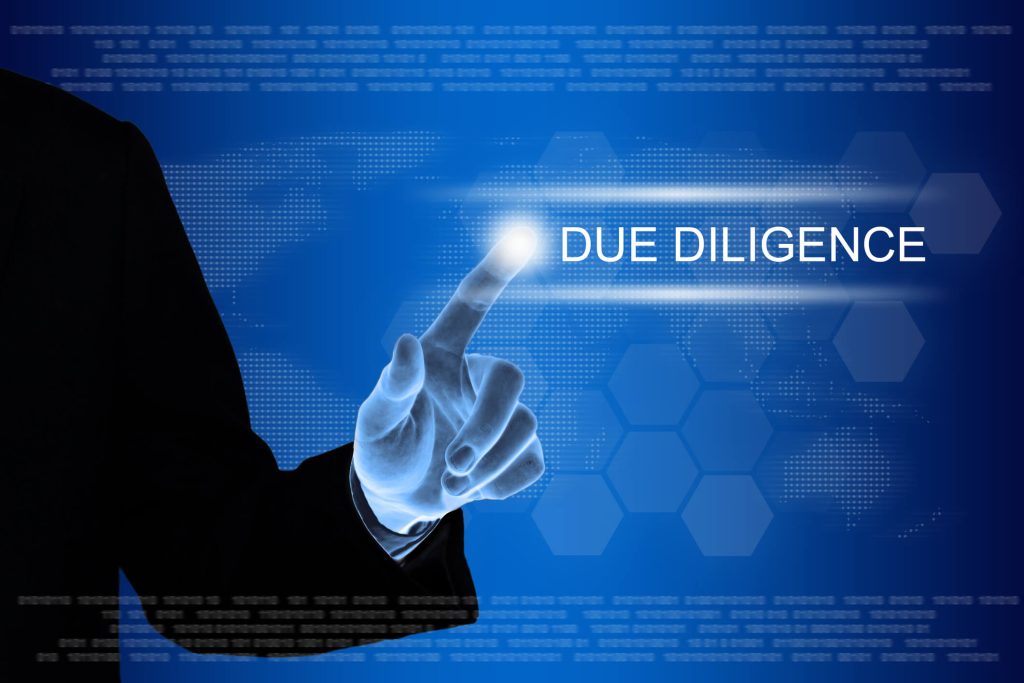Complete M&A Due Diligence Checklist for 2023

Biggest M&A Deals of 2022
March 4, 2023
Capital Raising: A Comprehensive Guide
March 9, 2023Due diligence is a necessary step for buyers and investors to take before committing to any significant transactions or investments. Before finalizing a deal, the parties engage in due diligence, which entails an in-depth analysis of the target company’s assets, liabilities, operations, and critical business relationships.
Due diligence is of paramount importance in the context of mergers and acquisitions (M&A), as it allows the parties to learn more about the other’s company and make educated decisions about the commercial potential and pricing of the deal. In this article, we will discuss the complete M&A due diligence checklist for 2023.
What Exactly Is an M&A Due Diligence Checklist?
A potential buyer or investor can benefit from using a due diligence checklist, a detailed rundown of everything that must be reviewed and evaluated as part of the due diligence process. Corporate structure, contracts, financial statements, intellectual property, tax records, customer and supplier relationships, and regulatory compliance are some items on the legal, economic, and operational due diligence checklist.

To ensure that all necessary information is gathered, reviewed, and analyzed by the parties involved, M&A attorneys play an essential role in developing and researching a thorough due diligence checklist. The due diligence checklist guides the process, ensuring nothing is missed and all parties have a complete picture of the target company’s advantages and disadvantages and any risks involved.
An attorney from A Priori can assist a seller or business owner in arranging the materials for a buyer or investor and negotiate a thorough but manageable due diligence checklist. You can guarantee a quick and painless closing by furnishing the purchaser or investor with all the necessary paperwork and information.
M&A Due Diligence Checklist Stages

Due diligence principles are divided into three stages: strategy, communication, and implementation. Each stage is critical to your company’s success and necessitates careful thought and planning.
Strategizing for Success
The strategy stage is all about establishing measurable and achievable goals for your company. It is vital to conduct market research and use the appropriate marketing tools to stay ahead of the competition. By identifying their needs, you can develop a strategy that speaks directly to your target audience by identifying their needs. A solid plan will help you position your company as an industry leader and set you up for success.
Communicating for Maximum Impact
The communication stage is about raising awareness and drawing attention to your company. Using the research, you gathered during the strategy stage, create a plan that speaks to your target audience. The right communication strategy will help you reach your audience and drive engagement, from social media campaigns to email marketing.
Implementing Principles
In the implementation stage, you will put your plan into action. This is where you evaluate and measure your company’s success. You can ensure your business is on the right track by tracking its progress and adjusting its strategy. When it comes to launching a marketing program, this stage is critical. Even the best strategy and communication plans will fall short if not correctly implemented.
Complete M&A Due Diligence Checklist for 2023

The due diligence checklist should address the points listed below.
Checklist for Organizational Due Diligence
Organizational due diligence is essential for fully understanding the inner workings of a target company. Areas such as company structure, culture, and operations must be evaluated during this process to gain a comprehensive understanding of the business. Evaluate the following:
- Legal entity structure, subsidiaries, and joint ventures are all examples of corporate structure.
- The board and management structure, including board composition, executive team, and key personnel.
- Values, mission, and employee engagement are all aspects of the corporate culture.
- Relationships with customers and vendors, including key accounts and contracts.
- Business units, facilities, and production processes.
- Regulatory compliance, which includes adhering to industry regulations and standards.
- Market analysis, growth strategies, and product development are all part of strategic planning.
Checklist for Sales and Marketing Due Diligence
Marketing diligence is an integral part of the due diligence process because it gives potential acquirers valuable insight into a company’s market position and growth potential. This report frequently includes details about top customers, commercial policies, and competitors.
- Sales processes such as the sales cycle, pipeline management, and sales performance metrics are all examples.
- Customer demographics, customer retention, and customer satisfaction are all part of the customer base.
- Marketing plans that include marketing channels, messaging, and target audiences.
- Competitors, market share, and pricing strategies are all part of the competitive landscape.
- Organizational structure, key personnel, and sales and marketing team performance metrics.
- Branding, advertising, and promotional materials are examples of marketing collateral.
Legal Due Diligence Checklist
Legal, due diligence is a meticulous process that involves assessing the legal risks associated with a company. It includes considering all litigation, permits, licenses, and agreements to gain insight into a company’s legitimacy and viability.
- Articles of incorporation, bylaws, and shareholder agreements are examples of corporate structure and governance.
- Contracts and agreements, including customer contracts, supplier contracts, and partnership agreements.
- Regulatory compliance, including adherence to industry regulations and legal requirements.
- Litigation history, including current and previous lawsuits, settlements, and judgments.
- Intellectual property includes patents, trademarks, copyrights, and trade secrets.
- Employment issues, such as employment agreements, benefits, and labor law compliance.
- Environmental issues, such as compliance with environmental regulations and potential liabilities.
- Insurance coverage and policies include general liability, property, directors and officers (D&O), and workers’ compensation.
Checklist for Financial Due Diligence
Finance is an important component of the buyer’s due diligence checklist because it provides potential buyers with a clear picture of a company’s market value and financial stability. This includes examining a target company’s revenue, profits, financial assets, and risks.
- Financial statements, such as balance sheets, income statements, and cash flow statements.
- Revenue streams include product lines, customers, and distribution channels.
- Fixed assets, inventory, accounts receivable, and accounts payable are all examples of assets and liabilities.
- Financial ratios such as profitability, liquidity, and leverage ratios.
- Capital structure, including debt and equity financing.
- Tax obligations, including federal, state, and local taxes.
- Past and projected financial performance, including revenue growth, margins, and cash flow.
Checklist for Manufacturing Due Diligence]
Knowing the target company’s production methods, infrastructure, and supply chain is impossible without conducting manufacturing due diligence. You should look into the following as part of your manufacturing due diligence.
- Manufacturing processes, quality control, and inventory management are all examples of production processes.
- Production facilities, warehouses, and distribution centers are examples of facilities.
- Suppliers, logistics, and transportation are all part of the supply chain.
- Machinery and equipment, including maintenance records and life cycle analysis.
- Product development includes research and development, new product development, and innovation.
- Procurement, pricing, and storage of raw materials and inventory.
- Regulatory compliance, which includes adhering to industry regulations and quality standards.
Checklist for Human Resources Due Diligence
It is critical to evaluate a target company’s cultural and workforce dynamics during the due diligence process. It assists teams in planning for effective cultural blending. An HR due diligence checklist typically unearths information on employee contracts, agreements, and current recruitment initiatives.
- Headcount, turnover, and key personnel are part of the employee base.
- Salary, benefits, and bonuses are all part of the compensation structure.
- Labor relations, including collective bargaining agreements, union agreements, and employee grievances.
- Employee training programs and career development opportunities are examples of training and development.
- Workplace culture encompasses diversity and inclusion, employee engagement, and workplace safety.
- Employment contracts, such as non-compete clauses, confidentiality clauses, and severance clauses.
Insurance Research
The target company’s insurance coverage and risks should be thoroughly investigated during due diligence. In this area, you should pay close attention to the following:
- Coverage limits, claim history, and exclusions for general liability insurance.
- Property insurance coverage, including limits, claims history, and exclusions.
- Information about directors’ and officers’ liability insurance, like policy limits, claims filed, and exclusions.
- Workers’ compensation insurance coverage limits, claim history, and exclusions.
- Coverage limits, history, and exclusions for cybersecurity insurance.
Checklist of Environmental, Health, and Safety (EH&S) Due Diligence
To ensure environmentally conscious M&A discussions, environmental, health, and safety risks must be reviewed during the due diligence process. Target companies should disclose environmental liabilities, investigations, or citations.
- Compliance with environmental regulations and permits.
- The storage, disposal, and transportation of hazardous materials.
- OSHA compliance, workplace hazards, and injury and illness rates are all aspects of workplace safety.
- Emergency preparedness with plans for emergency response, business continuity, and crisis management.
- Environmental liabilities include past and potential liabilities arising from contamination, hazardous waste, and pollution.
Checklist for Intellectual Property Due Diligence
Intellectual property is a valuable aspect of a business frequently transferred during an M&A transaction. Due diligence must be performed on trademarks, patents, and digital domains to ensure the transaction’s success.
- Patents include patent filings, issued patents, and patent applications.
- Trademarks and trademark applications, as well as trademark licensing agreements.
- Copyrights, including registered copyrights and licensing copyrights.
- Non-disclosure agreements and trade secrets.
- Third-party license agreements and licenses granted to third parties are examples of licensing agreements.
- Infringement risks include potential infringement of third-party intellectual property rights and pending litigation.
Checklist for Tax Due Diligence
A tax requirements checklist is essential for ensuring a target company’s legality, legitimacy, and viability. It includes tax assets, audits, property taxes, returns, and any international activities, and extensive documentation should be provided to demonstrate a worthwhile transaction.
- Returns on taxes, including federal, state, and local returns.
- Tax compliance, which includes following tax laws and regulations.
- Tax audits, including current and previous audits and assessments.
- Tax positions, including tax return positions and potential tax exposure.
- Tax planning, which includes tax strategies and potential tax savings.
Checklist of Information Technology Due Diligence
An IT audit provides information about a company’s key initiatives and potential security threats. When selling a business, an IT due diligence checklist is essential to ensure that key IT projects align with the ambitions of the potential acquirer.
- Hardware, software, and networks comprise the IT infrastructure.
- Data privacy and protection policies and practices.
- Qualifications, experience, and training of IT personnel.
- Data management, storage, and backup procedures are all systems and processes.
- IT projects currently underway or planned: timelines, budgets, and alignment with business objectives.
- Contracts with IT vendors: adherence to regulations and standards.
- IT risk management refers to managing potential risks and vulnerabilities in IT systems.
Frequently Asked Questions
Why is Due Diligence important in M&A?
Before investing, the acquirer must perform due diligence to learn as much as possible about the target company’s operations, assets, and liabilities. It helps the acquirer understand the financial, legal, operational, and cultural aspects of the target company, which are essential for determining whether or not the deal is an excellent strategic and financial fit.
The acquirer’s ability to predict and prepare for the financial and strategic outcomes of the transaction is greatly enhanced by the results of the due diligence process. It aids the acquirer in negotiating the terms of the deal and making educated decisions regarding whether to move forward with the acquisition, renegotiate the deal terms, or back out of the agreement altogether.
Who typically performs Due Diligence in M&A transactions?
The acquirer’s team, consisting of internal employees, external consultants, and legal and financial advisors, conducts the due diligence in an M&A transaction. To ensure the deal’s success, the team will analyze the target company’s finances, laws, operations, and culture in-depth.
Employees from the finance, legal, and operations departments of the acquirer are examples of possible internal personnel. External consultants like accounting, legal, and financial advisory firms can perform specialized due diligence.
Financial advisors typically analyze the target company’s financial statements and provide insights into the deal’s financial implications, while legal advisors review the target company’s contracts, agreements, and legal obligations.
Conclusion
Doing one’s due diligence before completing a merger or acquisition is essential. Acquirers can learn more about the target company’s operations, financial performance, and potential future prospects by conducting thorough due diligence.
The above checklists should provide a thorough overview of the most critical areas to assess during due diligence. However, the precise due diligence checklist may vary depending on the industry and the nature of the acquisition.



